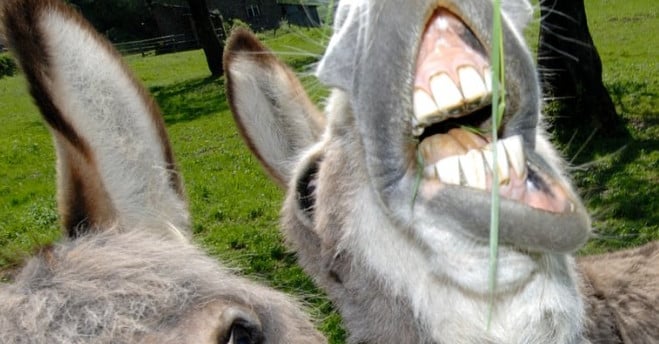The Nickering of a Donkey: A Unique Vocal Tapestry
The What, Why, How About Donkey Nickering
Angelina
3/30/20252 min read


The Nickering of a Donkey: A Unique Vocal Tapestry
When we think of animal sounds, the donkey’s iconic hee-haw often comes to mind—a loud, brash bray that echoes across farmlands and deserts. But donkeys, like many animals, possess a nuanced vocal repertoire that extends beyond their famous call. While the term “nickering” is more commonly associated with horses (soft, guttural sounds made through closed nostrils), donkeys produce their own array of expressive noises, including grunts, snorts, and even a quieter, breathy vocalization that might be likened to a nicker. This article explores the lesser-known vocalizations of donkeys and their role in communication, emotion, and survival.
The Donkey’s Vocal Range: More Than Just Braying
Donkeys are highly social animals, and their vocalizations serve as vital tools for connection. The bray—a loud, rhythmic combination of inhales and exhales—is their most recognizable sound, often used to signal distress, establish territory, or locate other herd members over long distances. However, in quieter moments, donkeys communicate through subtler means:
Grunts and Growls: Low-pitched grunts are exchanged during friendly interactions, such as grooming or greeting.
Snorts: Sharp exhales through the nostrils may signal alarm or curiosity.
Breathy Whuffles: A soft, nasal sound, akin to a horse’s nicker, is used between mothers and foals or bonded pairs. This gentle noise reflects contentment, reassurance, or a simple “check-in” within the herd.
These quieter sounds are easily overlooked but reveal the emotional depth and social intelligence of donkeys.
Why Do Donkeys “Nicker”?
While not technically nickering in the equine sense, the donkey’s softer vocalizations serve similar purposes:
Bonding: Mothers use gentle grunts to soothe foals, reinforcing their bond.
Safety: Herd members emit low noises to keep track of one another while grazing, ensuring cohesion without attracting predators.
Emotion: A relaxed donkey may produce a sigh-like exhale, signaling comfort, while anxious individuals might hum or whuffle to self-soothe.
These sounds are often accompanied by body language—ear positioning, tail flicks, or nuzzles—to convey meaning.
The Science Behind the Sound
Donkeys have a unique vocal anatomy. Their large larynx and elongated vocal folds enable the dramatic bray, but their ability to modulate airflow also allows for softer noises. Researchers suggest that donkeys, like horses, may use infrasound (frequencies below human hearing) to communicate over long distances, though this remains understudied.
Cultural and Historical Significance
The donkey’s voice has inspired folklore, literature, and even religious symbolism. In Mediterranean cultures, donkeys were once believed to carry the voices of spirits. Their braying has been interpreted as laughter, lament, or wisdom in myths. The quieter “nickering” sounds, however, remind us of their gentle, affectionate nature—traits often overshadowed by their comical bray.
Conclusion: Listening to the Unheard
The nicker-like murmurs of a donkey are a reminder that even the most familiar creatures hold secrets. By tuning into these subtle sounds, we gain insight into their social complexity and emotional lives. Whether calling across a canyon or humming to a companion, the donkey’s voice is a testament to the richness of animal communication—a language we are only beginning to fully understand.
Next time you encounter a donkey, pause and listen closely. Beyond the bold hee-haw, you might just hear the quiet poetry of their softer song. 🐴
